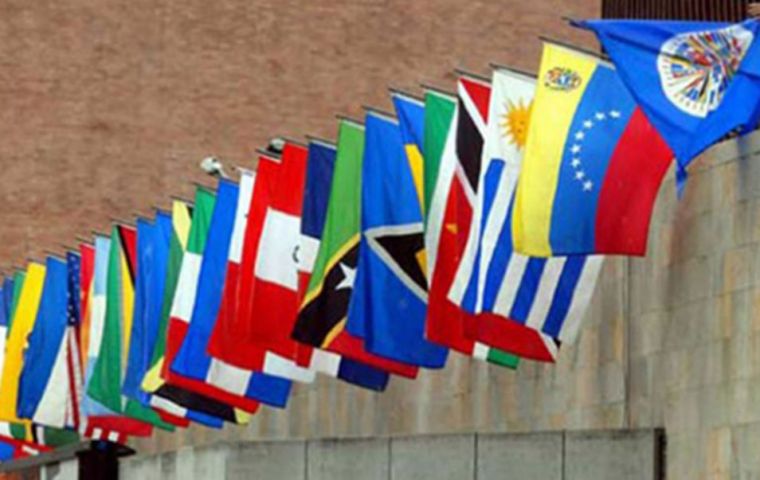MercoPress. South Atlantic News Agency
ECLAC needs to set aside four rogue countries to measure inflation for year 2021
 Argentina, Haiti, Suriname and Venezuela need to be measured separately to have a better picture of the region's economy, ECLAC reported
Argentina, Haiti, Suriname and Venezuela need to be measured separately to have a better picture of the region's economy, ECLAC reported Inflation in Latin America for the year 2021 was way above projections, the Economic Commission for Latin America and the Caribbean (ECLAC) has said in a report issued from its Santiago headquarters.
The UN said overall inflation reached 7.2%, but in order to reach that figure the experts needed to set aside countries with chronic inflation, namely Argentina, Haiti, Suriname and Venezuela.
Latin America closed 2021 with a higher than expected price increase due to climatic, political and social factors and problems related to international trade. In its “Preliminary Balance of the Economies of Latin America and the Caribbean” report, ECLAC estimated that the economy grew by 6.2% in 2021 and that 2022 will be marked by asymmetries between countries, in addition to a slowdown fueled by uncertainty.
“The pandemic has inflicted lasting damage on the growth of the economies in much of the region, which is aggravated by the structural problems that our region has had since before the crisis, these problems of low investment, low productivity and informality,” said ECLAC boss Alicia Bárcena.
According to the World Health Organization (WHO), the pandemic has left 326.2 million infections and 5.5 million deaths worldwide, this region being the one with the highest number of deaths, at 2.4 million.
The four largest economies (Brazil, Mexico, Chile and Colombia), performed above their central banks' target, while Argentina and Venezuela continued to show structural hindrances to progress from before the health crisis.
The document also highlighted the inflationary performances of Uruguay (7.96%) and Guatemala (3.07%).
Brazil's Consumer Price Index (CPI) of 10.06% in 2021 was above the Central Bank's goal of 3.75% and exceeded that of the previous year (4.52%), driven by the harshest drought in 100 years, which increased the price of fuel (49.02%) and electricity (21.21%), in addition to COVID-19.
In an attempt to control the sharp increase in prices in recent months, the Central Bank has been raising basic interest rates, which closed 2021 at 9.25%, its highest level since 2017 (10.25%).
Mexico followed suit, with 7.36%, after a significant rise in food and energy costs, which has led to 55.7 million Mexicans living in poverty, who account for 43.9% of the total population.
Not since 2007 has Chile finished a year with 7.2% inflation. This time around it was due to financial aid from the Government to fight COVID-19, coupled with early withdrawals of 10% of pension funds. Chile's Central Bank has increased interest rates by 350 basis points since July last year to curb rampant inflation, leaving the reference rate at 4%, the highest since 2014.
Meanwhile, the CPI in Colombia closed at 5.62%, due to a 4.01% rise in food prices which largely surpassed 2020's 1.61%. The main problem for Colombia was importing agricultural inputs due to the global container crisis while nationwide demonstrations did have an impact on the economy.
The Central Bank of Venezuela (BCV) reported inflation was 686.4% in 2021, thus leaving the hyperinflationary cycle after four years, although it remains the nation with the highest figure in the world.




Top Comments
Disclaimer & comment rulesCommenting for this story is now closed.
If you have a Facebook account, become a fan and comment on our Facebook Page!